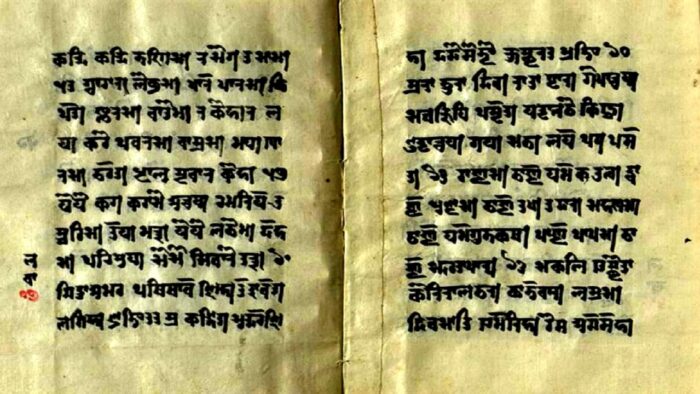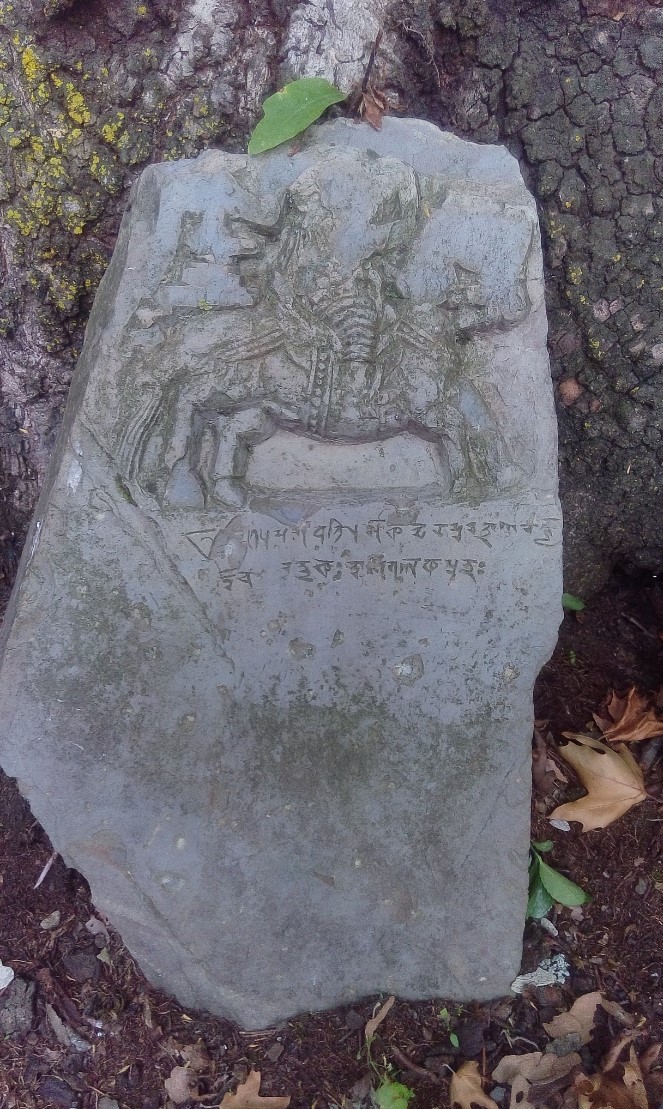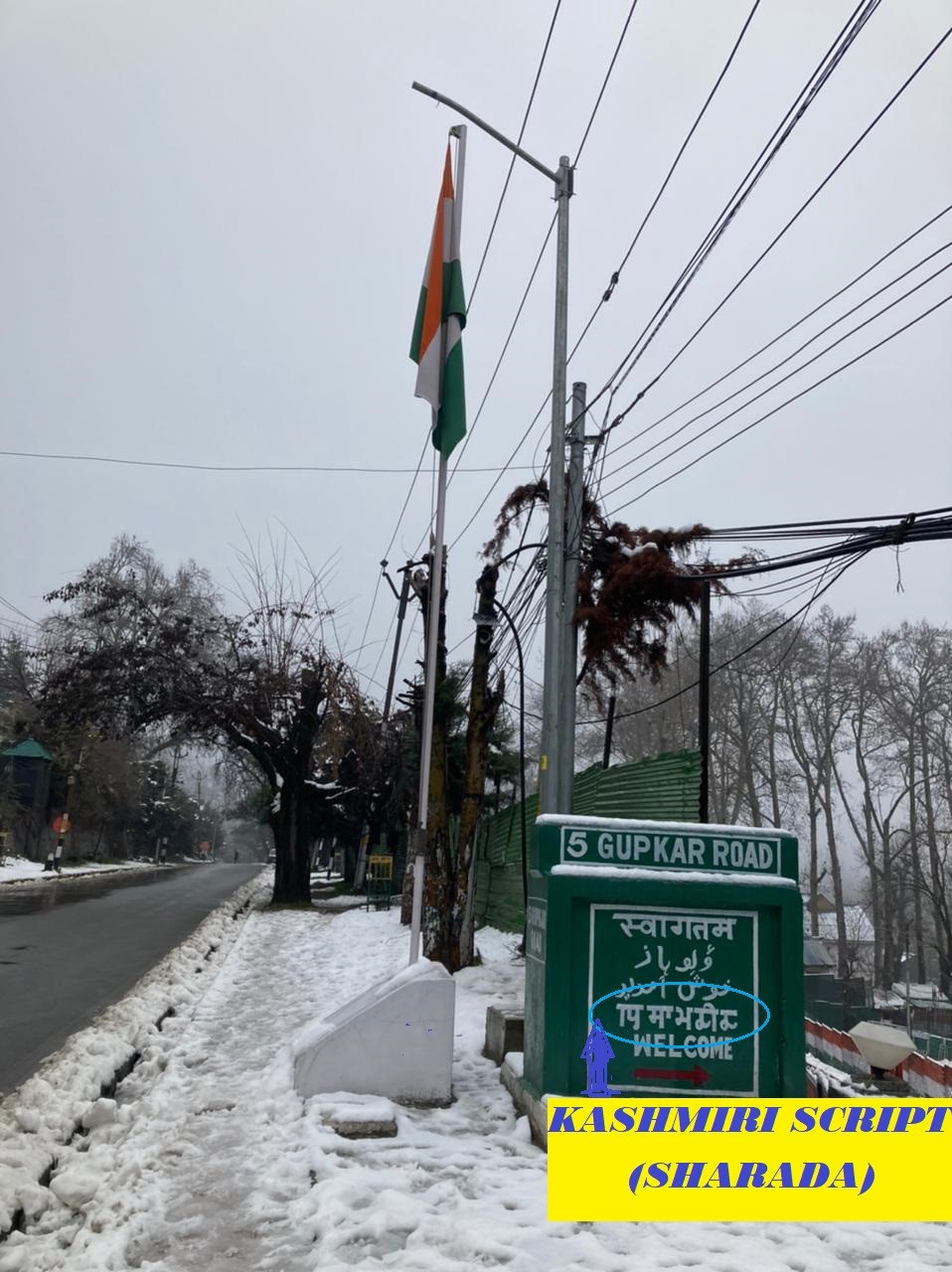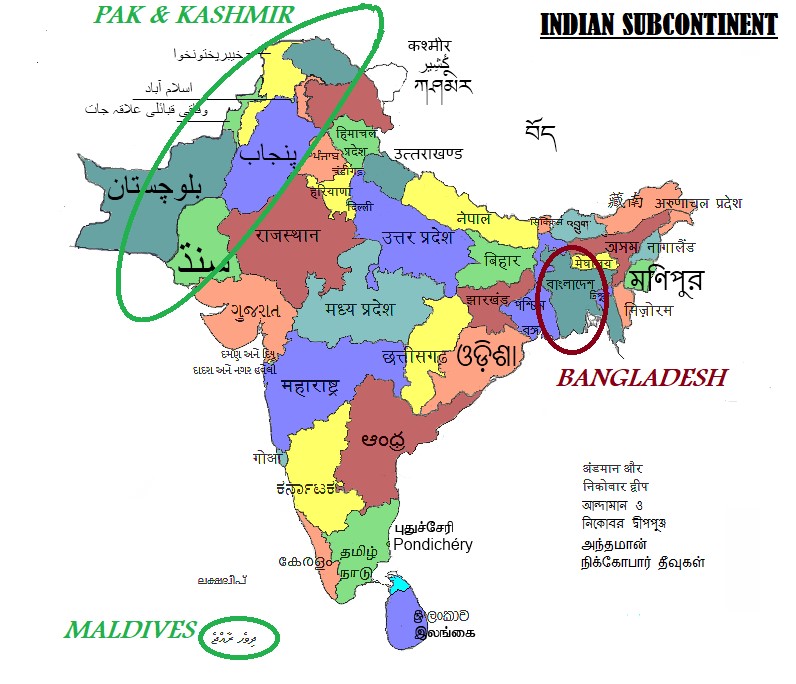Abstract
Kashmir has been the victim of multiple foreign invasions. The indigenism of Kashmir has been circumcised in various dimensions due to these foreign influences. In today’s geopolitical context, due to separatism and sponsored terrorism in the Valley, few segments of the Kashmiris claim a closer relation to Pakistan, than with India in cultural and communal expressions. The lipi or script always plays an important role in reclaiming one’s identity, either indigenous or communal, or even in the geopolitical context. ‘Sharda script’ was one of Kashmir’s identity which has vanished over time. After the abrogation of Article 370, reviving the indigenous script of Kashmir—the Sharda—could be one of the factors which could restore the psychological continuity of the Valley with the rest of the Indian cultural imagination.
Introduction
The Script (lipi) always plays an important role in reclaiming once identity, either indigenous or communal, or even in the geopolitical context. There are mainly three psychological impacts of implementing Kashmiri script for Kashmiri language in Kashmir. Kashmir, by the use of Nastalik script (right-to-left) in the Valley is one of the psychological factor that generates their communal identity of Islam. This, in the geopolitical context may continue claiming its closer relation to Pakistan (as Pakistan dominates as an Islamic State for Muslims in the subcontinent), than with India.
Language and Script in Communal Expressions
In the contemporary scenario of the UT of J&K, use of Hindi and Urdu languages are visible in the religious context of ‘Hindi for Hindu’ and ‘Urdu for Muslim’. Here, Hindi is taught in the Devanagari script (left-to-right) whereas Urdu is taught in the Nastalik script (right-to-left).
Coming to the Kashmiri language, it is also taught in the Nastalik script (right-to-left), indicating the relations with their communal identity, Islam. Implementing Devanagari script for Kashmiri language is also possible, which connects to the rest of Indian scripts (Abugida writing system i.e. left-to-right). But it will again find difference among the Kashmiri Hindus and Kashmiri Muslims. And as a result, the preference of choosing the script for Kashmiri language will be Nastalik (right-to-left), as the majority of Kashmiris are Muslims. And, if the optional is not in preference then, the forceful implementation of Devanagari script (left-to-right) for Kashmiri language may lead to protests in the initial stages. This is again due to the communal identity overruling the indigenous identity.
The Three Psychological Impacts
- Identity of being Kashmiri: A Prior
Kashmir due to its majority of the Muslim population and the campaigned interest for Pakistan made the Valley a more communal (Islamic) than their Kashmiri identity. While Kashmir follows Urdu as the official language along with the Nastalik script (right-to-left), it will show more socio-political connection to Pakistan, than rest of India.
The presence of Nastalik script (right-to-left) within the Kashmiri language again helps in arguing their communal connection with Pakistan, as they commonly claims for their geographical connectivity with.
The Kashmiri Script (Sharda), which is written from ‘left-to-right’ (abugida writing system) should be brought as an alternative for the Kashmiri language instead of only using the Nastalik, writing from ‘right-to-left’. This may promote their indigenous script for their indigenous language i.e. Kashmiri script for Kashmiri language. This, to an extent may make some psychological impact—from the communal identity connecting Pakistan to an indigenous identity of being a Kashmiri.
- Relation with the rest of the Indigenous scripts (Abugida writing system)
As Kashmir was gradually into the lap of a Pan India journey from the past decade, the cultural impact of the Sharda script will also revoke the existed ‘indigenes’ of the Valley in terms of history, tradition, the Rshi cults and the rich Sharda civilization. By which all together is the core of Vedic culture. The Sharda script is also the classical script which is visible from the past inscriptions (see Figure 1). It covers a wider area beyond the valley and can also be made for today’s Pahari language as well.
By the implementation of Kashmiri script (Sharda) been written from ‘left-to-right’ not only promotes the classical identity of Kashmiri language. Instead, the script also have its continuity with the rest of Indian scripts which is similar to the Abugida writing system i.e. from ‘left-to-right’, than from Pakistan’s Nastalik of ‘right-to-left’. This also cut-off the geopolitical continuity of Pakistan to Kashmir in terms of Nastalik script (right-to-left).
(Figure 1: Sharda script inscription (found in 2021) from an ancient Shiv temple, Kupwara)
- Phonetically connected to the indigenous tradition
It is to be also noted that, along with the learnings of Kashmiri script (Sharda) to the Kashmiri language, the up-coming generation will be following the phonetics of Indian alphabets अ (a), आ (aa), इ (i), ई (ii)… instead of phonetics of Urdu alphabets ا (alif), ب (be), پ (pe)…
A way forward for psychological integrity, is to promote Sharda in the name of ‘Kashmiri script’, which can reclaim the indigenous identity of Kashmir as similar to other Muslim influence states like Kerala, West Bengal or Tamil Nadu—having their own scripts. By reviving the Kashmiri script for Kashmiri language can promote the cultural continuity and may keep the communal identity behind.
(Figure 2: Sharda or Kashmiri script in Gupkar road, Srinagar)
Choosing the Prior Identity: Custom or Communal
There are two political examples within Indian subcontinent with regards to the indigenous-communal identities— Bangladesh and Maldives. Maldives, once been part of the Vedic-Indian tradition comprising the stories of Rshi Agastya in the folktales is now been diminished. Due to the Arab-African Islamic influences in the island country gradually created a separate identity of their indigenous culture. Implementation of the Nastalik script (right-to-left) was one of its main factor which, today resulted to a complete Sunni-Islamic State, the communal identity. Whereas, Bangladesh became independent from East Pakistan was due to their superiority in their identity of being a Bengali, than the communal identity of Urdu through the Nastalik script (right-to-left). Even though it is a Muslim majoritarian State, today, it officially follows their Bangla/Bengali script rather than their communal–Nastalik (right-to-left). In both the cases, script played a major role in reclaiming once indigenous or communal identity (see figure 3).
(Figure 3: Scripts of Indian subcontinent representing indigenous identity and communal identity)
Feature Image Credits: wikipedia.org
Watch video presentation of the above paper here:
Disclaimer: The opinions expressed in this article belong to the author. Indic Today is neither responsible nor liable for the accuracy, completeness, suitability, or validity of any information in the article.











